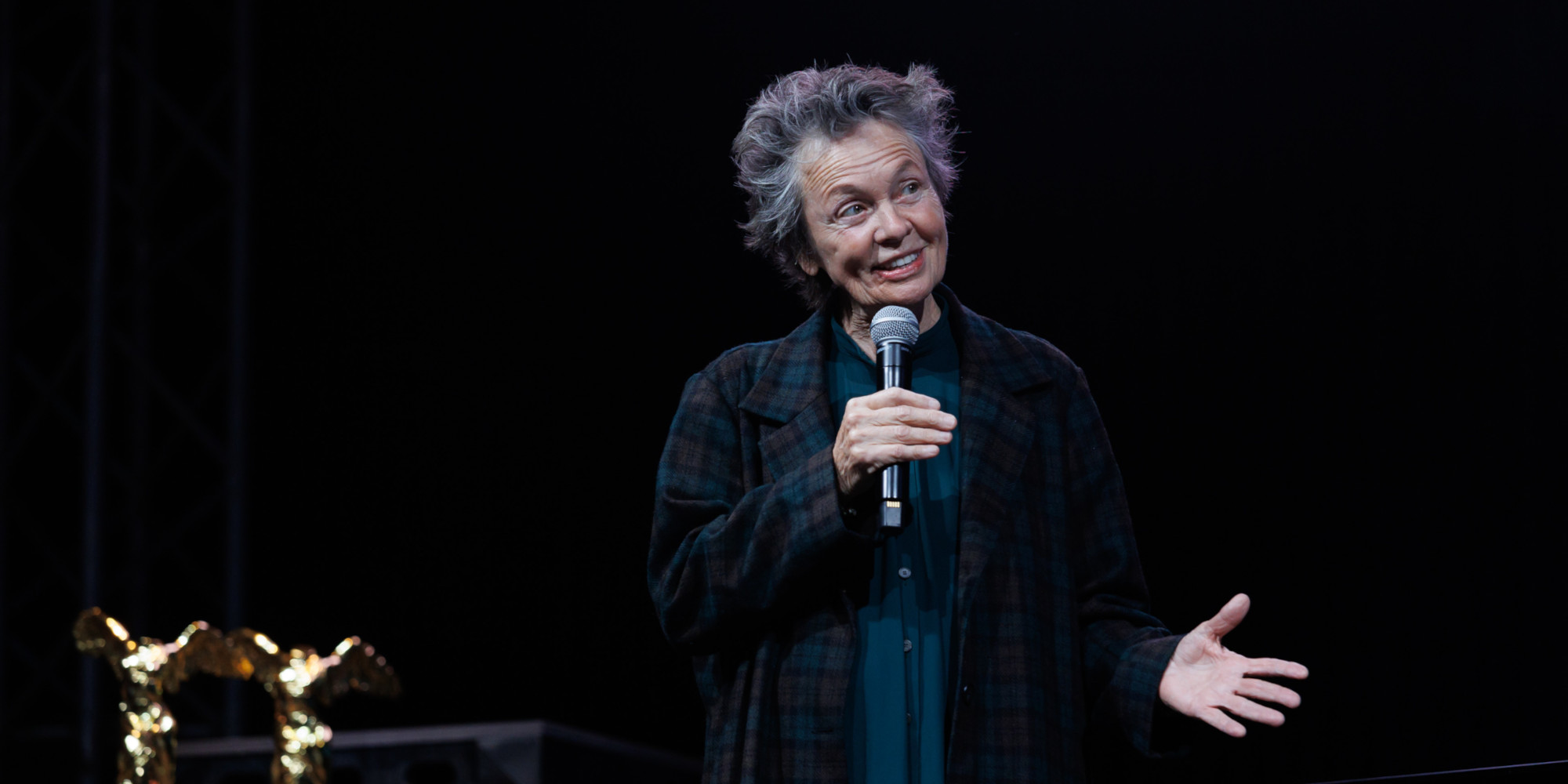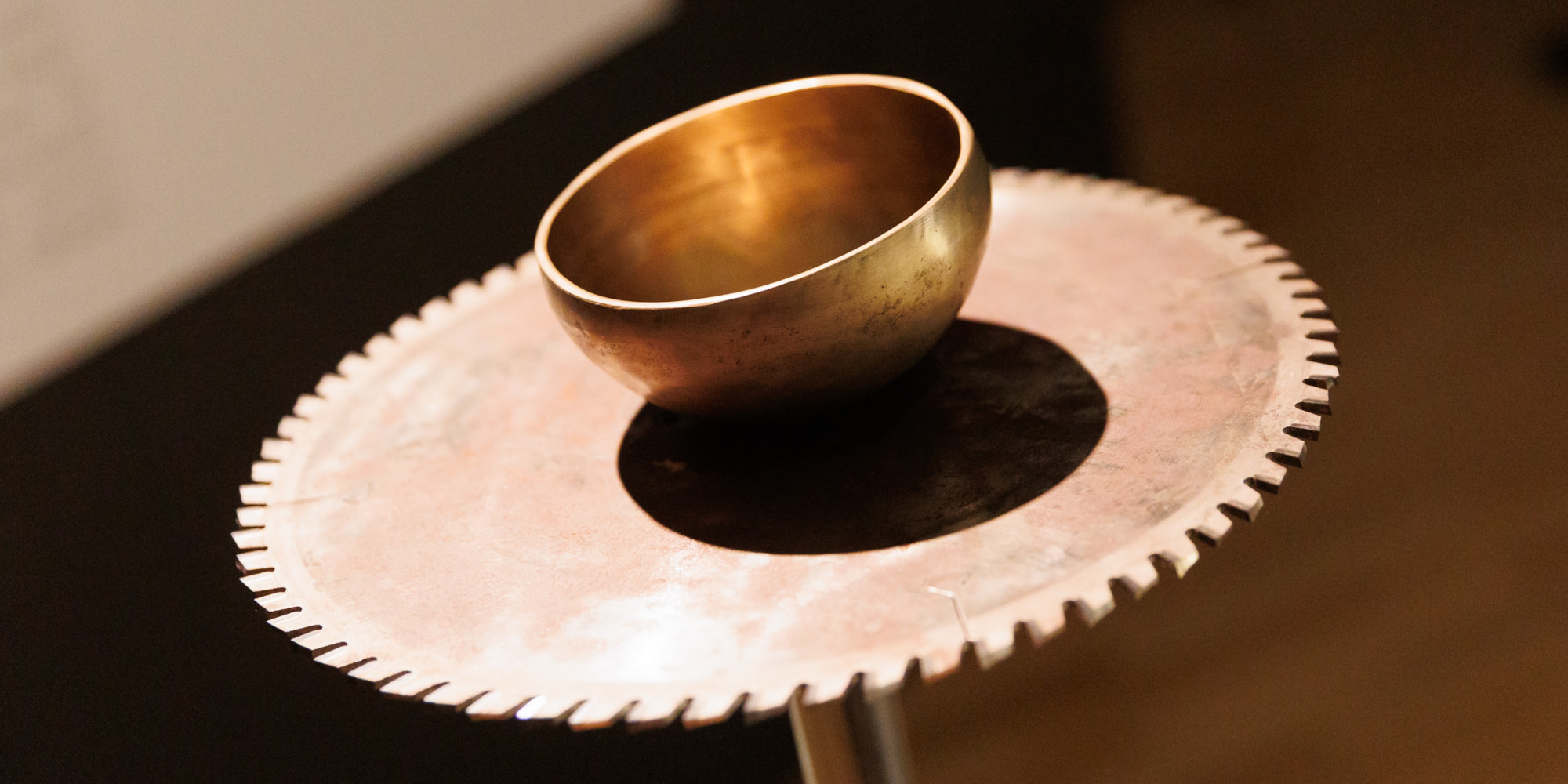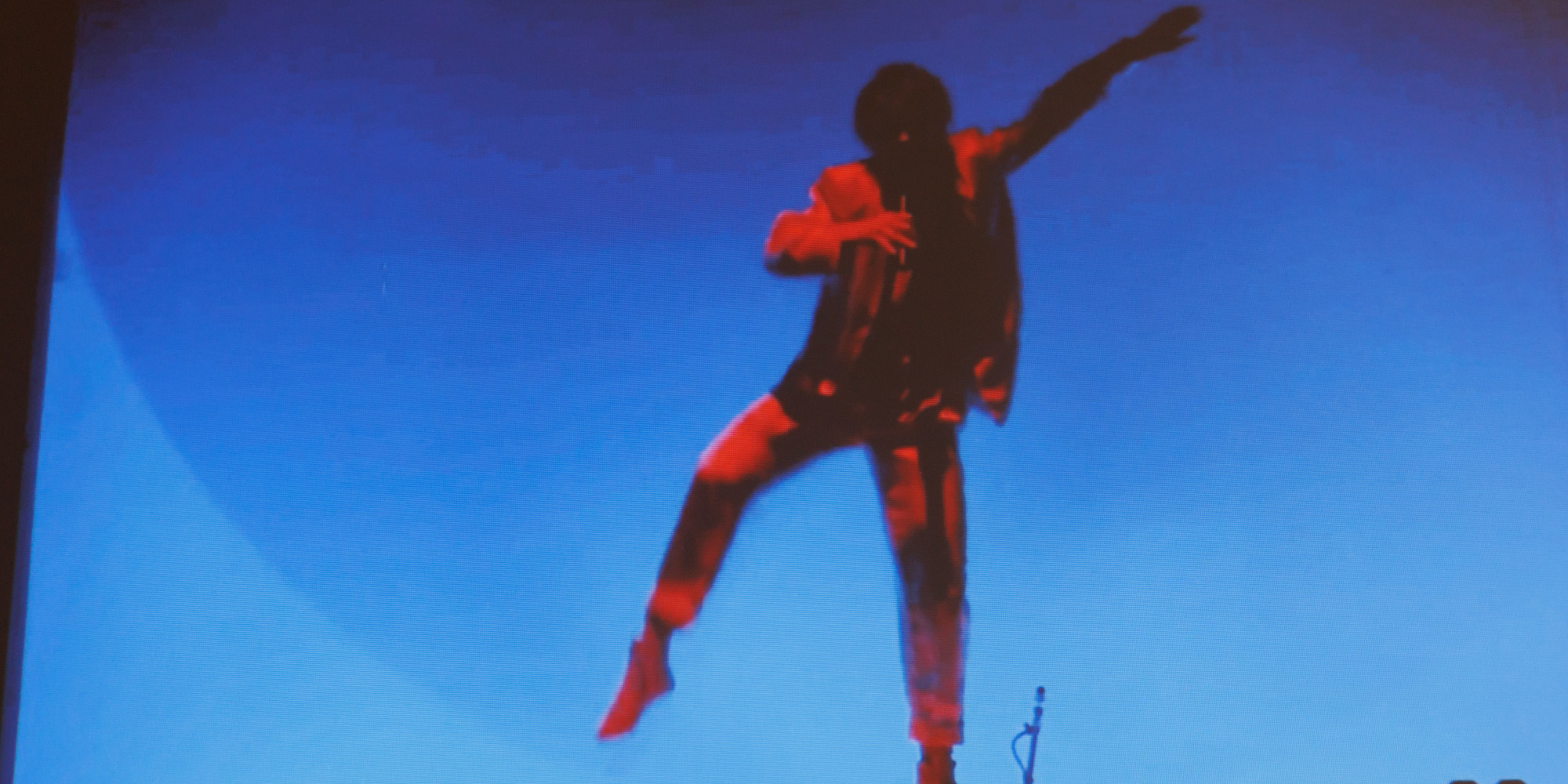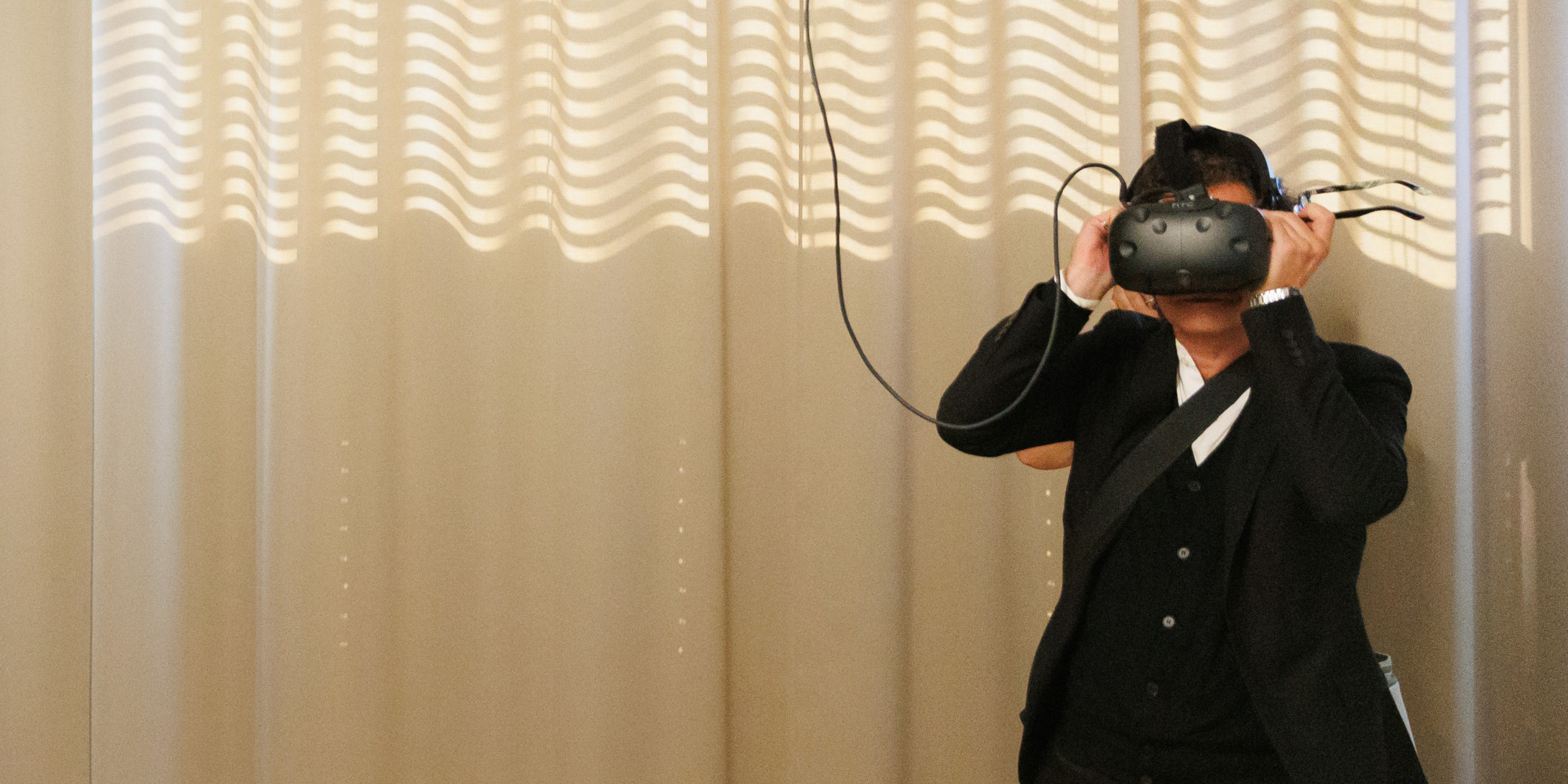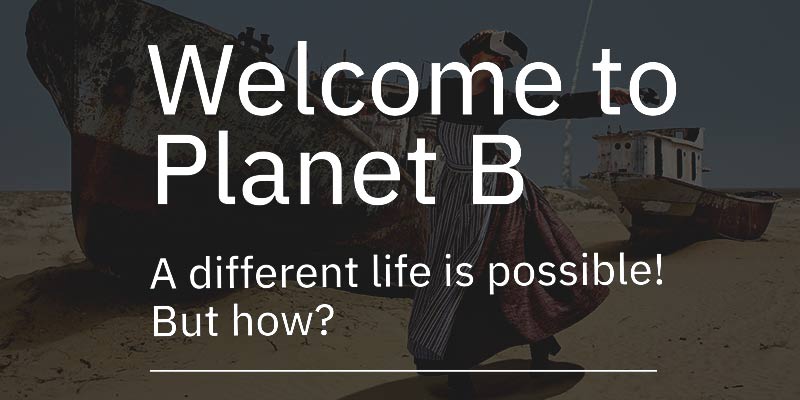Bowl and Blade
Laurie Anderson (US)
As a sculptor I’ve been working with ways to get stories into things. In the 70’s, I made a number of talking objects. Initially inspired by Robert Morris who made “Box With the Sound of Its Own Making”- a minimalist work that contained a recording of the sounds of the hammers, drills and saws used to construct it- I made boxes with recordings of notes in number series. I also made a series of “film sculptures” projections of figures onto small clay sculptures which I called “fake holograms”. These talking figures, installed on the floor, told stories that required the viewer to bend down to their level to listen.
An animatronic parrot was also in this series. The most recent version of this work is currently in the “Four Talks” room which is still on display from the large exhibition “The Weather” at the Hirshhorn Museum in Washington DC. The parrot talks in a kind of stream of consciousness telegraphic jump cut language that I often use in song writing and performance. In the early ‘70s I made “Handphone Table” which uses bone conduction as a listening device.
In “Bowl and Blade” from 1996 I wanted the voice to travel up a glass tube and create vibrations in a Tibetan prayer bowl. The bowl revolved on a circular saw to represent both circularity and the images that Tibetans use to talk about how to cut through delusion. The first version was a collection of all the stories from solo performances. The current version, realized by Gerold Hofstadler from Ars Eectronica features a combination of voice and ambient.
Credits
Ron Blunt Hirshhorn Museum and Sculpture Garden
Home of the Brave
Laurie Anderson (US)
Eccentric performance artist and musician Laurie Anderson directs this documentary about her multimedia theatrical presentation, which was filmed live at the Park Theatre in New Jersey. Her offbeat performance is a mixture of song, poetry, film and whimsy and includes guest performances by author William S. Burroughs and Adrian Belew on guitar. The show includes the songs “Excellent Birds,” “Smoke Rings,” “Language Is a Virus” and “Talk Normal.
Released on April 25, 1986
Credits
Directed by Laurie Anderson
Produced by Elliot Abbott, executive producer
Paula Mazur, producer
Music by Laurie Anderson
Cinematography by John Lindley
Film Editing by Lisa Day
Production Design by David Gropman
Art Direction by Perry Hoberman
Costume Design by Susan Hilferty
Warner Brothers / Craigman Digital / Canal Street Communications
To the Moon
Laurie Anderson (US), Hsin-Chien Huang (TW)
To the Moon uses images and tropes from Greek mythology, literature, science, sci fi space movies and politics to create an imaginary and dark new moon. During the 15-minute VR experience, the viewer is shot out from earth, walks on the surface of the moon, glides through space debris, flies through DNA skeletons and is lifted up the side and then tossed off of a lunar mountain. Unlike Aloft and Chalkroom, To the Moon is divided into scenes and has a more formal narrative structure while still allowing the participant choice of where and how to look.
To the Moon is dedicated to the ancient Chinese painter who made a huge vertical landscape, a painting of a mountain with groves of pine trees, a steep road winding up to the top, waterfalls, tiny hikers with walking sticks, thatched bamboo huts, and fishermen casting their nets in the sea far below. The painting was very intricate and it took many years to make. When the painter finally finished the painting he walked into it. This is what we aim to do with To The Moon, allow the viewer to literally walk into a work of art.
Credits
“To The Moon” VR experience commissioned by The Louisiana Museum of Modern Art, Humlebæk, Denmark; The National Culture and Arts Foundation, Taipei, Taiwan; and National Taiwan Normal University.
